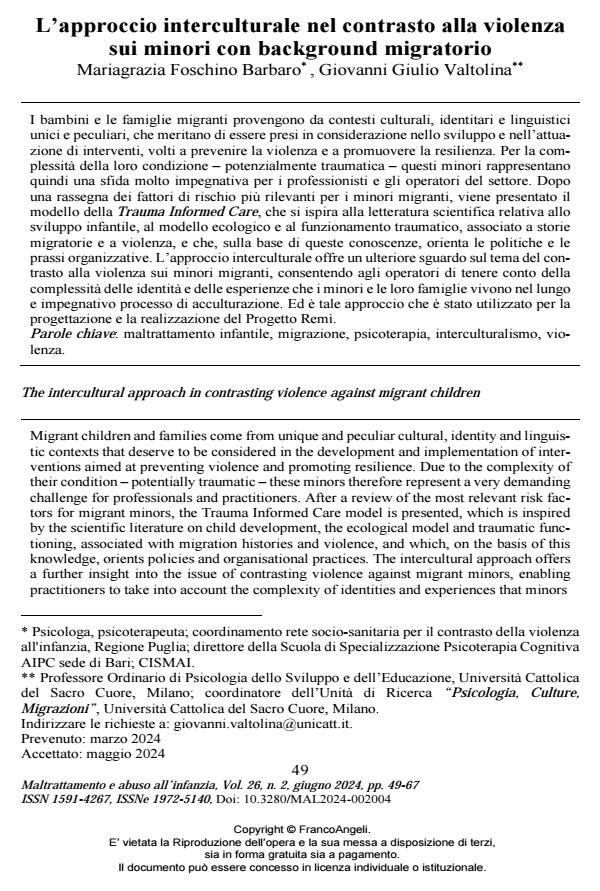The intercultural approach in contrasting violence against migrant children
Journal title MALTRATTAMENTO E ABUSO ALL’INFANZIA
Author/s Mariagrazia Foschino Barbaro, Giovanni Giulio Valtolina
Publishing Year 2024 Issue 2024/2
Language Italian Pages 19 P. 49-67 File size 251 KB
DOI 10.3280/MAL2024-002004
DOI is like a bar code for intellectual property: to have more infomation
click here
Below, you can see the article first page
If you want to buy this article in PDF format, you can do it, following the instructions to buy download credits

FrancoAngeli is member of Publishers International Linking Association, Inc (PILA), a not-for-profit association which run the CrossRef service enabling links to and from online scholarly content.
Migrant children and families come from unique and peculiar cultural, identity and linguistic contexts that deserve to be considered in the development and implementa-tion of interventions aimed at preventing violence and promoting resilience. Due to the complexity of their condition – potentially traumatic – these minors therefore rep-resent a very demanding challenge for professionals and practitioners. After a review of the most relevant risk factors for migrant minors, the Trauma Informed Care model is presented, which is inspired by the scientific literature on child development, the ecological model and traumatic functioning, associated with migration histories and violence, and which, on the basis of this knowledge, orients policies and organisation-al practices. The intercultural approach offers a further insight into the issue of con-trasting violence against migrant minors, enabling practitioners to take into account the complexity of identities and experiences that minors and their families go through in the long and demanding process of acculturation. And it is this approach that was used for the design and implementation of the Remi Project.
Keywords: child abuse, migration, psychotherapy, interculturalism, violence.
Mariagrazia Foschino Barbaro, Giovanni Giulio Valtolina, L’approccio interculturale nel contrasto alla violenza sui minori con background migratorio in "MALTRATTAMENTO E ABUSO ALL’INFANZIA" 2/2024, pp 49-67, DOI: 10.3280/MAL2024-002004